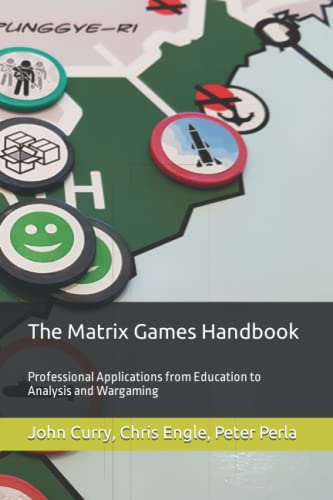What do you think?
Rate this book


298 pages, Paperback
Published April 14, 2022
Basically, each turn a player says what happens next. Other players may disagree and say what they think happens. Then some dice are rolled to see which happens. (p. 130)
Rather than explore what happens when we are told: “here is a set of tools, go solve this problem”, Matrix Games provide a means to “explore what problems there might be, how to characterize them, and how to devise a set of tools that you think might solve them.” (p. 221)